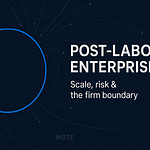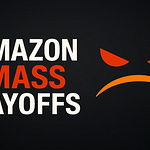🧭 New Era Pathfinders
Check out my growth community for navigating the Fourth Industrial Revolution! The New Era Pathfinders is a group of people looking to find meaning and build a career in the next wave. I am now teaching FOUR frameworks for adaptation!
https://www.skool.com/newerapathfinders/about
TLC - Therapeutic Lifestyle Changes for a balanced, happy, and healthy lifestyle. This is an 8-pillar, evidence-based framework developed by Dr. Roger Walsh.
PBL - Project Based Learning to master any skill or technology, extremely popular in schools, and how I learned everything as an adult.
Systems Thinking - To approach problems like I do, and other geniuses like Mark Zuckerberg and Elon Musk. Systems thinking is the most critical cognitive skill.
RUPA - My proprietary framework specifically for pivoting into the 4IR and Meaning Economy. It means “Reduce worry, Understand impact, Prepare for changes, Adapt and align”
🚀 Accelerating AI Adoption
The episode delves into a comprehensive framework for accelerating AI adoption and deployment in organizations. A significant constraint to AI adoption stems from the technology's novelty, leading to widespread uncertainty about deployment strategies and expected outcomes. This uncertainty often results in hesitation or ineffective implementation attempts.
🏗️ Center of Excellence Approach
Recent research has revealed that establishing an AI Center of Excellence can often hinder rather than help AI adoption. This centralized approach tends to be more obstructive than empowering individuals to explore AI in a decentralized, organic manner. The most effective strategy involves empowering product leaders, including product owners, program managers, and product managers, to lead AI initiatives. This bottom-up approach allows for more flexibility and innovation in AI deployment and rollout.
🐛 Crawl Phase
The crawl phase marks the beginning of the AI adoption journey. It emphasizes exploration and discovery without the pressure of immediate value creation. Organizations should encourage all employees to explore AI tools driven by curiosity, removing any expectation for instant results. The primary goal of this phase is to build familiarity, confidence, and comfort with AI technologies. Employees should be given the freedom to experiment and play with AI tools, much like people did when email and the internet were first introduced. The crawl phase naturally concludes when users begin to feel bored with their explorations, indicating they've absorbed the initial novelty and are ready for more structured applications.
🚶 Walk Phase
The walk phase transitions the organization from pure exploration to value creation. In this stage, teams attempt to identify one tool or method that solves a specific problem or improves a particular process. The focus shifts to achieving measurable gains in terms of making processes better, faster, cheaper, or safer. Ideally, AI implementations will improve multiple aspects, but even one significant improvement can justify continued investment. A practical example provided involves using AI-generated art for book covers. This application proved to be faster, cheaper, and more effective than commissioning human artists, demonstrating clear value in a specific use case.
🏃 Run Phase
The run phase marks the beginning of systematic AI integration. Organizations start to operationalize AI use based on lessons learned from successful implementations in the walk phase. This stage involves training people specifically for AI-related roles, building automation pipelines, and replicating successes across different areas of the business. For example, IT departments might be tasked with using AI to automate backlog tasks or improve ticket resolution times. Marketing teams could leverage AI for generating and A/B testing copy and images. The run phase aims to squeeze as much value from AI technologies as possible, applying successful strategies across multiple departments and processes.
✈️ Fly Phase
The fly phase represents the pinnacle of AI maturity within an organization. At this stage, the company has developed substantial in-house expertise and is ready to establish a formal center of excellence. Leaders who have emerged during the adoption process, whether they are individual contributors, technical leaders, or managers, become responsible for setting best practices and centralized authority on AI use within the business. These individuals have a deep understanding of both the organization's needs and AI's capabilities, allowing them to guide strategic AI initiatives effectively.
🎯 Goal of AI Adoption
The overarching goal of accelerating AI adoption extends beyond individual organizational benefits. By encouraging rapid and widespread AI integration into various industries, the aim is to build a broad consensus on AI's economic value. This consensus will drive further investment and innovation in AI technologies, leading to more robust economic growth and scientific advancements. The faster AI becomes a standard tool across industries, the quicker society as a whole can reap the benefits of increased productivity and technological progress.











